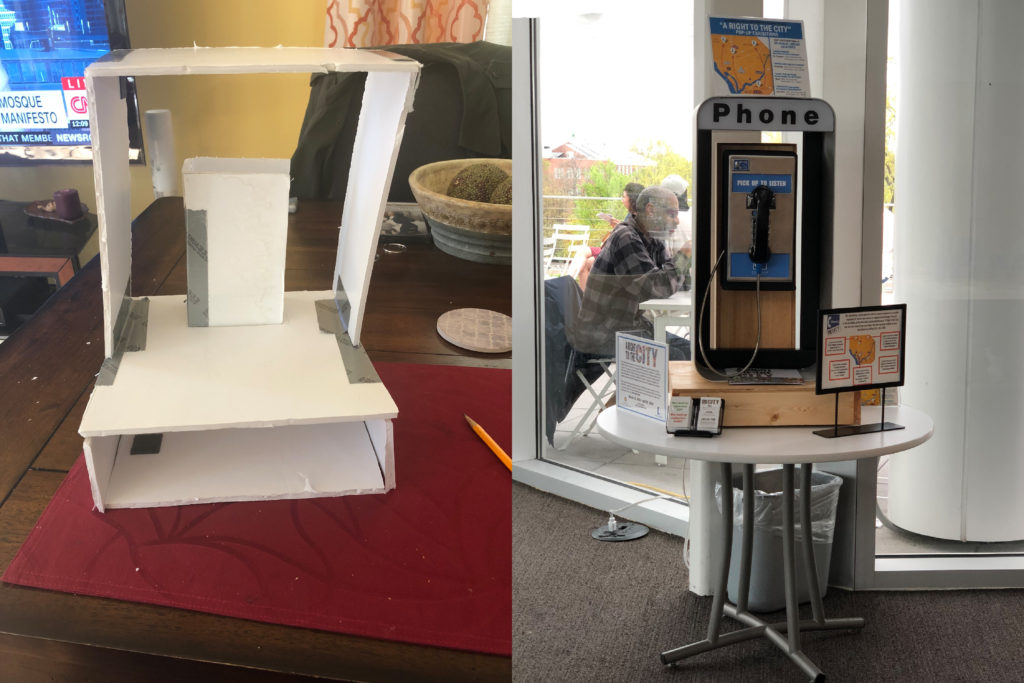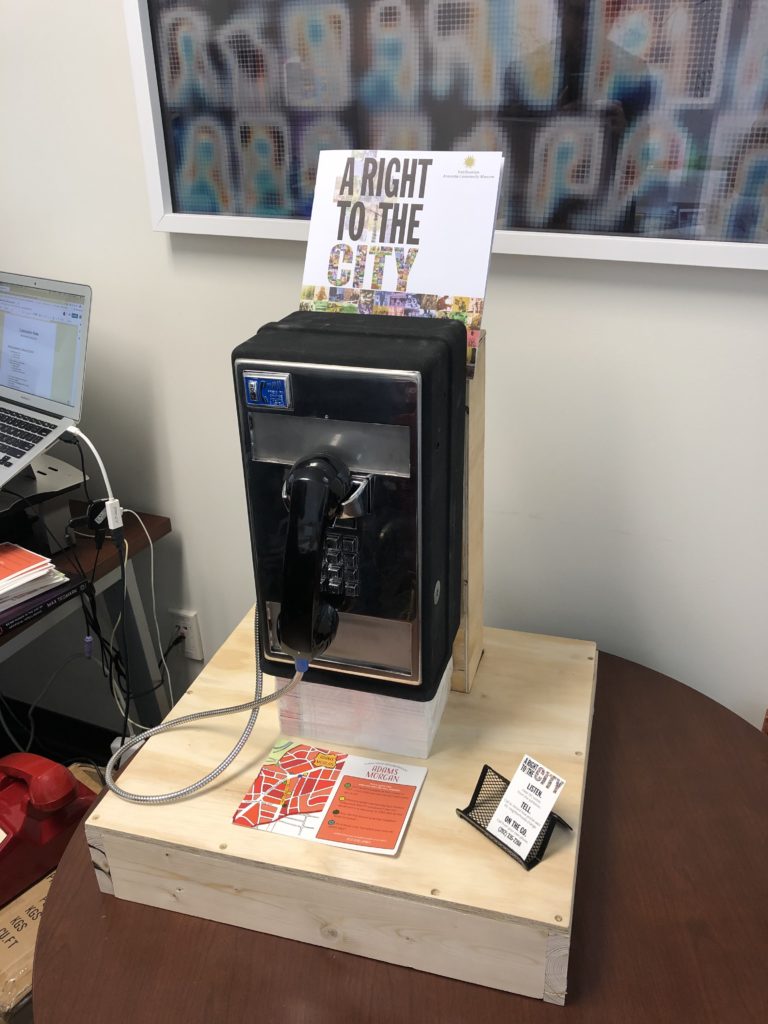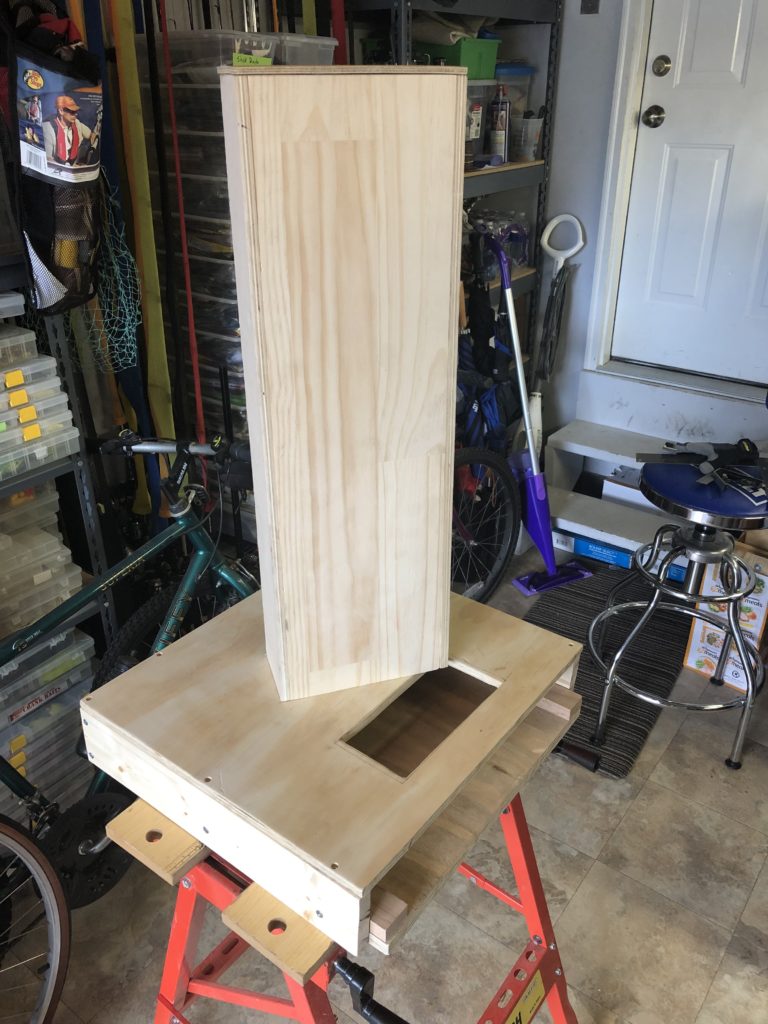
Our first proof of concept (left) and the finished product at PorchFest 2019 (right).
If the payphone is to be a serious actor in our storytelling system, we must ensure a proper stage!
The first step was developing the proof of concept using pieces of poster board cut to scale. This helped in thinking about how to achieve the practical goals for the payphone platform: stability to hold a 30-pound payphone, minimizing the overall weight for portability, and easy assembly/disassembly for setting up quickly at events. In keeping these goals in mind, the design quickly became a two-piece platform that utilizes tension to provide the stability to hold the payphone’s weight. The two pieces in the platform design are the base (the horizontal piece) and the post (the vertical piece where the payphone is mounted).

In making the first version of the platform, usability considerations were baked into the design of the base and the post. By far, the most important of the considerations were afforded for cable management – without which the payphone wouldn’t function.

The payphone is operated and managed through a custom configured Obihai Obi200 VoIP (voice over IP) Adapter with Google Voice. When the payphone is connected to the Obihai, with some custom settings, lifting the receiver triggers auto-dialing to the phone number that has been configured with the adapter. For the purposes of PorchFest 2019, the payphone was configured to auto-dial the hotline that was developed for the Smithsonian Anacostia Community Museum’s “A Right to the City” exhibit.

Knowing that the VoIP adapter needs to be close to the payphone and knowing that the phone cable comes out of the middle of the back plate of the payphone, a solution needed to allow the VoIP system to work unobstructed. The back of the base and the post are intentionally open so that regardless of the setting, wire management will always be available and easy. Additionally, a hole saw was used to create space for the telephone cable to pass from the back of the payphone through the post to reach the VoIP adapter.

During the first test of Version 1.0, the height of the payphone was determined to be too low. Using a stack of postcards, the ideal height was determined and recorded in notes for the next iteration of the platform.

In an effort to minimize the overall weight of the platform the first iteration of the post was built out of ½” and ¼” plywood sheets and cut down to size. In the first tests with mounting the payphone to the post, concern of weight stability was brought to the forefront. This concern led to the second iteration of the post being made from ½” thick project wood slabs cut to size. Having thicker and more stable wood being used for the post allowed for a more secure mounting of the payphone.

The post is designed to allow for the payphone to be easily mounted on through the use of a mounting plate and bolts. The mounting plate came with the payphone and has been permanently bolted to the post. The back of the payphone has bolts that have a ¾” allowance so that they can be used to hang the payphone onto the mount. Having this hanging system allows for the payphone and platform to be taken apart into manageable, lightweight pieces to further increase the overall mobility of the system. Additionally, the post has holes near the top of the base to allow for the payphone awning to be affixed, providing it with much needed stability.

Viewing the platform as a stage, the final step was to think about the signage on the phone itself. The payphone has inserts that provide opportunities for custom signage. After thinking about what was important to highlight about the system on the phone as well as thinking about what sort of prompt would provide enough scaffolding to inspire stories from users, the final signage was decided upon. The “Pick Up to Listen” prompt is general enough for many situations, but still can spur newcomers to give the system a try.
Stay tuned as we create new versions of platforms for different venues and uses!
This post was contributed by Hazel Arroyo, a Game Design graduate student at American University.
This post was originally contributed in July 2019 on dc.storytelling.city, a Playful City Lab project website.